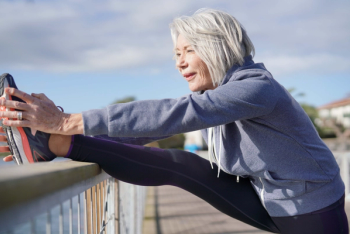
Omega-3 next-generation ingredients: SupplySide West 2023 Report
Omega-3 suppliers rolled out their latest advancements, spanning algae innovations and better sensory measurements.
Omega-3 ingredient suppliers discussed their latest ingredient advances during October’s SupplySide West trade show in Las Vegas. These companies demonstrated that the quality and sophistication of omega-3 ingredients, whether from fish oil or algae oil, are only getting better.
Like Fish Oil, but from Algae
Dsm-Firmenich (Kaiseraugst, Switzerland) promoted life’sOMEGA O3O20, an algae oil the supplier says provides omega-3 fatty acids EPA and DHA in the same ratio as in standard fish oil, but with two times the potency. Specifically, life’sOMEGA O3O20 touts an EPA:DHA ratio of 1.5 : 1. The company says it is the “first and only single-source algal omega-3 with the same EPA:DHA ratio naturally found in fish oil.”
The ingredient is not blended but rather comes from a single algae source, emphasized Penny Antonopoulos, Dsm-Firmenich’s senior director of marketing and business development for Health, Nutrition & Care, North America, at SupplySide West. The company uses its proprietary fermentation process to achieve life’sOMEGA O3O20’s EPA:DHA ratio. Antonopoulos said this stems from Dsm-Firmenich’s expertise in “knowing what levers are needed to be able to bring these different ratios to life.”
The ingredient will be offered commercially next year. It contains a total omega-3 content of 550 mg/g of natural triglycerides. Because the ingredients in the life’sOMEGA portfolio are produced via fermentation and are not farmed from algae, Antonopoulos said they have “zero impact on the marine ecosystem” and are ensured to be “free of marine and environmental contaminants.” In addition, she said, current supply challenges involving fish oil have raised interest in algal ingredients like life’sOMEGA.
Antonopoulos also pointed to the vast number of studies the company has done on its algal oils, estimating the number of clinical trials at over 90 and the number of publications at more than 135. These include a study showing that algal oil helped to lower triglyceride levels comparably to fish oil, showing that “the end benefits are the same,” she said.
Of life’sOMEGA O3O20, Antonopoulos said, “it demonstrates the strong capability that we’ve had in the omega3 space, having our own footprint in order to develop this product, our own capabilities, coupled with the science capabilities that we have with our translational science team. In addition to that, the applications teams who are bringing these concepts to life from a formulation standpoint really showcase that capability and know-how to be able to bring forward the best product possible.”
“It’s an area of innovation…and a portfolio we continue to invest in because we truly believe in it and see it will help drive the future of omegas in the market,” she concluded.
Sophisticated Sensory Measurements
At SupplySide West, GC Rieber VivoMega (Kristiansund, Norway) introduced a new analysis method called VivoSens that measures the sensory aspects of the company’s omega-3 oils. So far, the company has applied VivoSens to three of its products and will soon roll it out to the rest of the products in its line, said Ståle Søfting, sales and marketing director, GC Rieber VivoMega, at the show.
“VivoSens is a proprietary analysis method developed by VivoMega to identify, quantify, and standardize the components that contribute to the taste and smell of omega-3 oils,” a company brochure explains. In essence, the company uses its standardized method to measure the taste and smell attributes of an oil. The company then conveys that information, including sensory score and specification limits, to clients, giving clients objective, quantifiable proof of the oils’ taste and smell quality, with the objective of supplying the best-tasting oils to customers.
As the brochure explains: “VivoSens is a proprietary technology utilizing dynamic headspace GC-MS that has been customized and adapted specifically to VivoMega oils. Utilizing this method, the volatile components responsible for the sensory profile (if present) are separated from the oil and are then identified and quantified using a standard curve with known concentrates. This sophisticated process allows us to provide an objective rating of sensory performance as well as a specification limit that is reproducible from batch to batch.”
The company developed VivoSens because otherwise taste and smell evaluations can be subjective and difficult to express to customers. With VivoSens, said Søfting, “this is very qualitative.” He added: “It’s one thing to say we have a great taste or smell for our product. But what does that mean? So now we can actively provide that information in our specs for our products.”
Currently, omega-3 companies might tout their oils’ Total Oxidation Value (TOTOX) scores as evidence that their oils have good sensory attributes. They might also use sensory panel evaluations to provide similar data. However, Søfting said that “TOTOX doesn’t necessarily measure sensory performance.” That is, he said, taste and smell “don’t have to be correlated with TOTOX. You can have good sensory performance and not such a good TOTOX score in some cases.” In addition, the company points out, “sensory panels are highly subjective.”
Instead, VivoSens provides customers with the objective proof they are looking for that the oils they’re purchasing offer good taste and smell. Søfting added that VivoSens can be applied across the entire VivoMega portfolio. “We’ve shown that we can achieve really good sensory performance on high and low concentrates, so you can do it across the portfolio,” he concluded.
Newsletter
From ingredient science to consumer trends, get the intel you need to stay competitive in the nutrition space—subscribe now to Nutritional Outlook.





